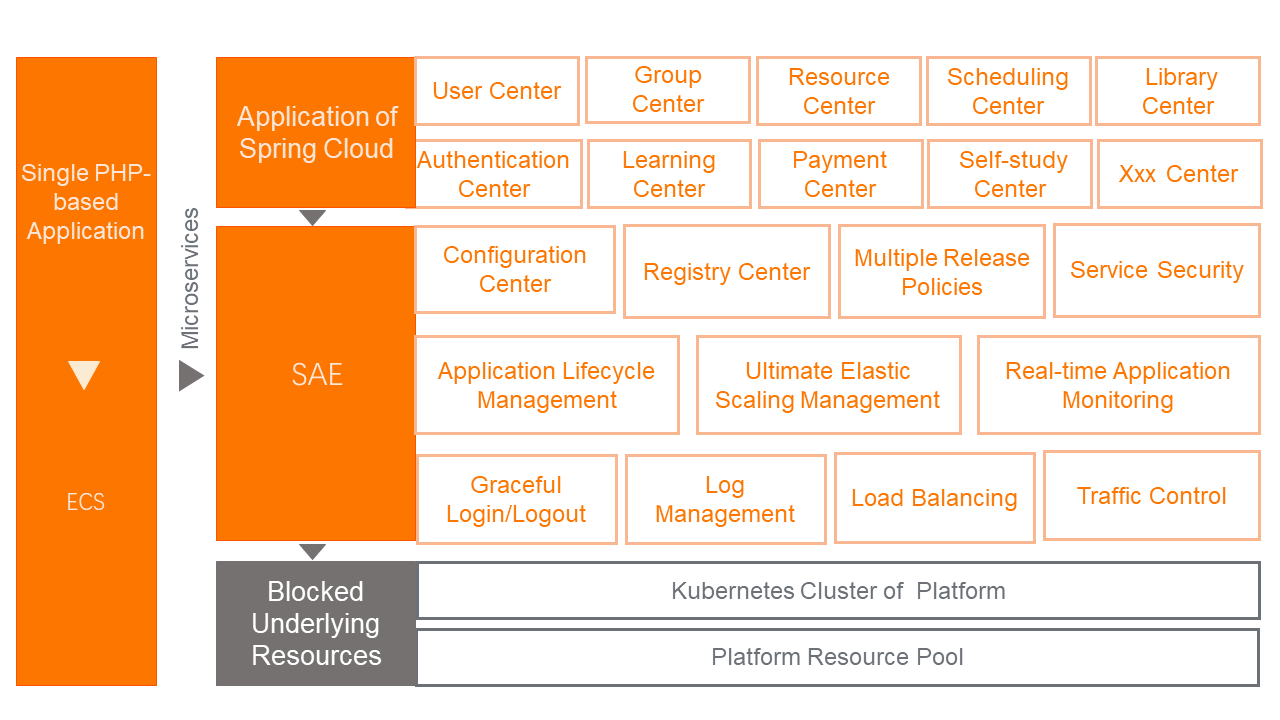Step up the digitalization of your business with Alibaba Cloud 2020 Double 11 Big Sale! Get new user coupons and explore over 16 free trials, 30+ bestselling products, and 6+ solutions for all your needs!
"Classes have stopped, but learning will continue" is a proposition from the Ministry of Education of China. During the pandemic, almost all education institutions and platforms are grasping at opportunities to provide hundreds of public welfare courses. According to statistics, the market value of 13 online education-related companies has increased by nearly 80 billion yuan since the beginning of this year. The offline education market is sluggish as more people are rushing into the online market. The pandemic has helped popularize online education. The popularization rate in major areas has rapidly increased to nearly 100% from less than 20% previously. The pandemic also promoted the development of online education in third-tier and fourth-tier cities.
According to the data from iiMedia Research, the number of online education users in China exceeded 200 million in 2018 and is expected to reach 300 million by the end of 2020. In addition, according to the data of iiMedia Research, the market size of China's online education in 2018 reached 251.8 billion yuan and is expected to exceed 500 billion yuan by 2022.
Due to the online demands of users, products, and services, the online education industry needs to break through limitations of time and space. Besides, the uneven distribution of education resources caused by geographical restrictions is also a difficulty that needs to be solved by the online education industry. By solving these problems, the industry can lower the learning threshold and share education resources. At the same time, the online education industry needs technical means and capabilities to gradually build up integrated ecological capabilities of content supply, platform, distribution, and promotion. Starting from the business logic, its core link includes two points: the introduction and realization of traffic.
Under the rapid influx of traffic, it is both an opportunity and a challenge for online education institutions and third-party service providers. The main challenges are listed below:
In terms of traffic introduction and the construction of the core competitiveness of online education platforms, challenges mainly include:
Network collaboration and data intelligence are the basic features of future business. The online education industry must improve its operation efficiency, business innovation capabilities, and precision service capabilities to further realize online businesses, users, and services. The realization of these business capabilities depends on cloud-based IT infrastructure, Internet-based technologies, and data-driven and intelligent applications.
Based on open technical standards, concepts, and practices, cloud-native is becoming a new interface for interactions between cloud and enterprises. As the core point of cloud-native, Alibaba Cloud middleware's products and best practices are accelerating the cloud-based IT infrastructure and Internet-based technologies for online education. Alibaba Cloud middleware has been polished and verified by various services of Alibaba. It is widely used in various industries, such as Alibaba Cloud online education, with the advantages of openness and stability.
Next, there is a detailed use case.
As a widely acclaimed learning application, Timing focuses on helping community users improve learning cohesion and achieve learning goals. Currently, more than seven million people have conducted efficient learning through Timing. Timing is different from traditional online learning applications. It provides many online education services with social features, such as Timing self-study room, learning-in-library, video punch-in, learning diary, contract group, and learning service. These services help users find their learning rhythm and stay consistent with their learning. Timing's business state changes with time, as user access is mainly concentrated at night and on holidays. Timing's peak traffic quadrupled during the early stages of the pandemic during Spring Festival, which increased Timing's O&M costs.
Under the explosive growth in users and traffic, Timing has to face the following four pain points:
Alibaba Cloud's Serverless Application Engine (SAE) is based on the Serverless architecture. SAE shields the underlying IaaS O&M and details of Kubernetes (K8s). Different from Serverless products based on Function as a Service (FaaS), users are allowed to directly use SAE without modifying the programming model and transforming code. At the same time, SAE perfectly combines with microservices architectures such as Spring Cloud/Duboo to provide services throughout the application lifecycle. These services include application release and management and service governance. SAE perfectly fits the technical requirements of Timing, including ultimate elastic scaling, flexible management throughout the application lifecycle, and perfect support for mainstream microservices architectures.
The following figure shows the solution's architecture:

1. Elastic scaling is used to cope with uncertain burst traffic.
The solution provides second-level automatic and timed elastic scaling to help applications easily cope with traffic peaks during big promotions. The maintenance cost is reduced while SLA is guaranteed. Elastic scaling is widely used in the Internet, game, and online education industries, and it can be flexibly started and stopped on-demand to save costs and assist with O&M. It applies to enterprise customers in all industries that worry about costs. Some enterprise customers may have multiple business environments on the cloud but have a high vacancy rate in some environments. Elastic scaling can also be used for these customers.
2. The fast construction of on-cloud microservices applications for small-and medium-sized enterprises
The solution helps customers eliminate details of underlying IaaS purchases and O&M as well as K8s. This makes it easy for customers to deploy microservices applications. Therefore, the solution is suitable for start-ups and developing companies with rapid business growth, high growth expectation, and inefficient staffing in all industries.
3. The clearer overall technical architecture
In this solution, each service is independent and clear in its responsibilities. With the support of Alibaba Cloud SAE, the solution allows customers to focus only on business and products.
Based on open technical standards, concepts, and practices, cloud-native has become the shortest path to enterprises' digital transformation. As the core point of cloud-native, middleware has several key advantages, such as various types, simple access, high stability, and efficiency. With these advantages, middleware has become a "magic weapon" for online education enterprises to improve business stability and efficiency. Alibaba Cloud is now leading online education into a new stage with advanced technologies, products, and best practices.
Aixuexi Education Group: Racing Against Time through Cloud-Native Practices
From Architecture to Code: Analysis of the Latest Trends in Software Development

212 posts | 13 followers
FollowAlibaba Clouder - March 23, 2021
Alibaba Cloud Native - March 17, 2021
Alibaba Cloud Community - June 4, 2025
Alibaba Cloud Community - January 26, 2025
Alibaba Clouder - April 3, 2020
Alibaba Clouder - April 3, 2020

212 posts | 13 followers
Follow Black Friday Cloud Services Sale
Black Friday Cloud Services Sale
Get started on cloud with $1. Start your cloud innovation journey here and now.
Learn More Microservices Engine (MSE)
Microservices Engine (MSE)
MSE provides a fully managed registration and configuration center, and gateway and microservices governance capabilities.
Learn More ACK One
ACK One
Provides a control plane to allow users to manage Kubernetes clusters that run based on different infrastructure resources
Learn MoreMore Posts by Alibaba Cloud Native